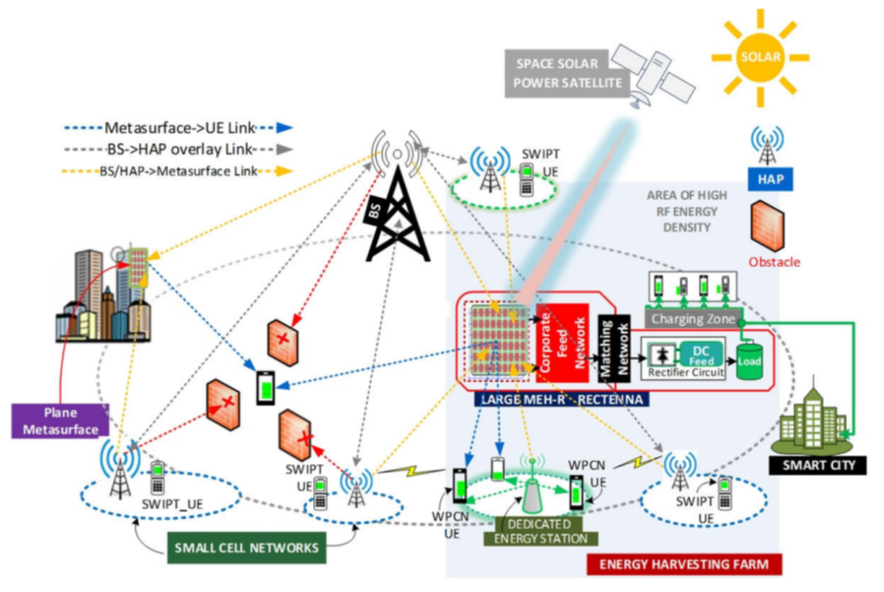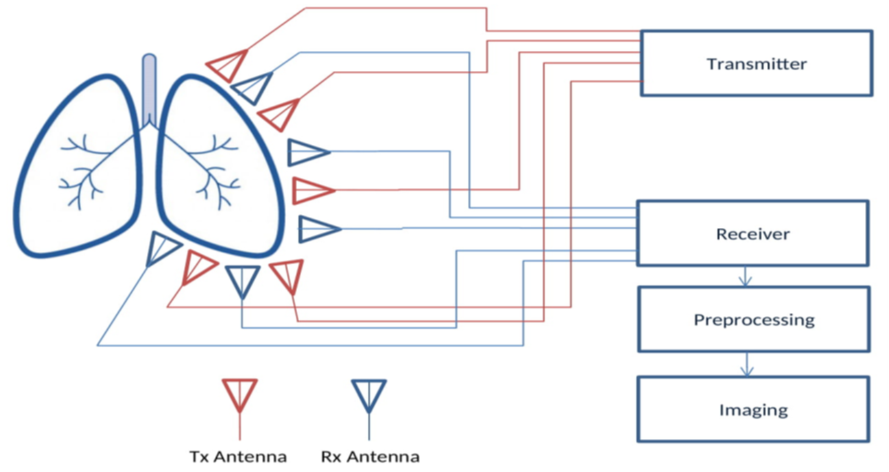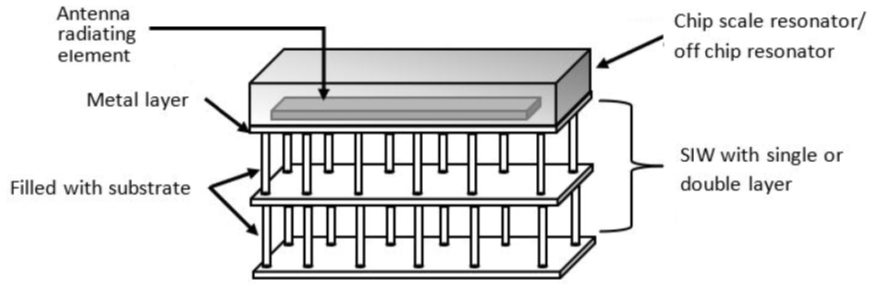Radio and Sensor Engineering
This research theme focuses on the engineering design and development of radio and sensor devices for wireless and intelligent systems.
Research areas
- Microwave, millimetre-wave (mmWave), and Tera-Hertz (THz) antennas
- Metasurface-based radio frequency (RF) structures
- Environmental and physiological sensors
Our current projects
Metasurfaces are artificially engineered periodic electromagnetic (EM) structures that exhibit unique and promising characteristics such as low profile, high energy gathering capacity, strong EM field enhancement, and tunable reflection properties, making them more attractive than conventional arrays for RF energy harvesting, RF power transfer, and wireless communication.
RF signals are increasingly considered to be a viable source of energy for charging low-power sensors and battery-operated devices wirelessly due to their pervasive and penetrable nature. Using metasurfaces as signal reflectors for non-line-of-sight devices is also increasing the prospect of manipulating the RF propagation environment in a constructive manner to enhance wireless communications.
This research investigates the design and performance of reconfigurable metasurfaces with tunable properties and functions for energy and communication applications.
This project is in collaboration with Flinders University.
Principal investigators
- Boon-Chong Seet
- Jack (Xuejun) Li

Medical imaging using radio frequency (RF) waves in the microwave and millimetre-wave regimes is a promising non-contact sensing technique for early-stage detection of cancer and other serious diseases. This research aims to design, model, and fabricate compact and high-performance antenna with a superwide bandwidth (SWB) that is critical for detecting different cancerous diseases at both superficial and deep tissue levels.
Unlike current research on antenna arrays for detecting a single tumour type, we aim to design a single SWB antenna that functions as a non-contact sensor to detect multiple tumour types (e.g. breast, lung, brain and skin) based on the analysis of acquired scattering parameters and the dielectric contrast between healthy and unhealthy tissues.
This project is conducted in partnership with the Biomedical Device Innovation Centre at Shenzhen Technology University.
Principal investigator
- Boon-Chong Seet

Among the frequency bands designated for RF applications, tera-hertz (THz) is the least utilised and thus offers a vast amount of bandwidth to provide extremely high data rates for future bandwidth-hungry applications.
Most modern electronic devices use integrated on-chip antennas (OCAs) due to their small size. However, those chip-level antennas have the major drawbacks of limited bandwidth and gain. Furthermore, the antenna size will be at micron scale at THz range, resulting in high fabrication challenges. Hence, a new on-chip antenna model needs to be explored.
This research investigates emerging design techniques such as substrate integrated waveguide (SIW), metamaterials (MTM), dielectric resonator antenna (DRA), and graphene material to address the existing performance issues and fabrication challenges in OCAs for the THz band.
Principal investigator
- Jack (Xuejun) Li

Members
Theme leader
Theme members
PhD students
- Henry Ojukwu
- Mohammadreza Farashahi
- Wasan Althubitat Al Amro
- Biswash Paudel
- Md Jahan Ali